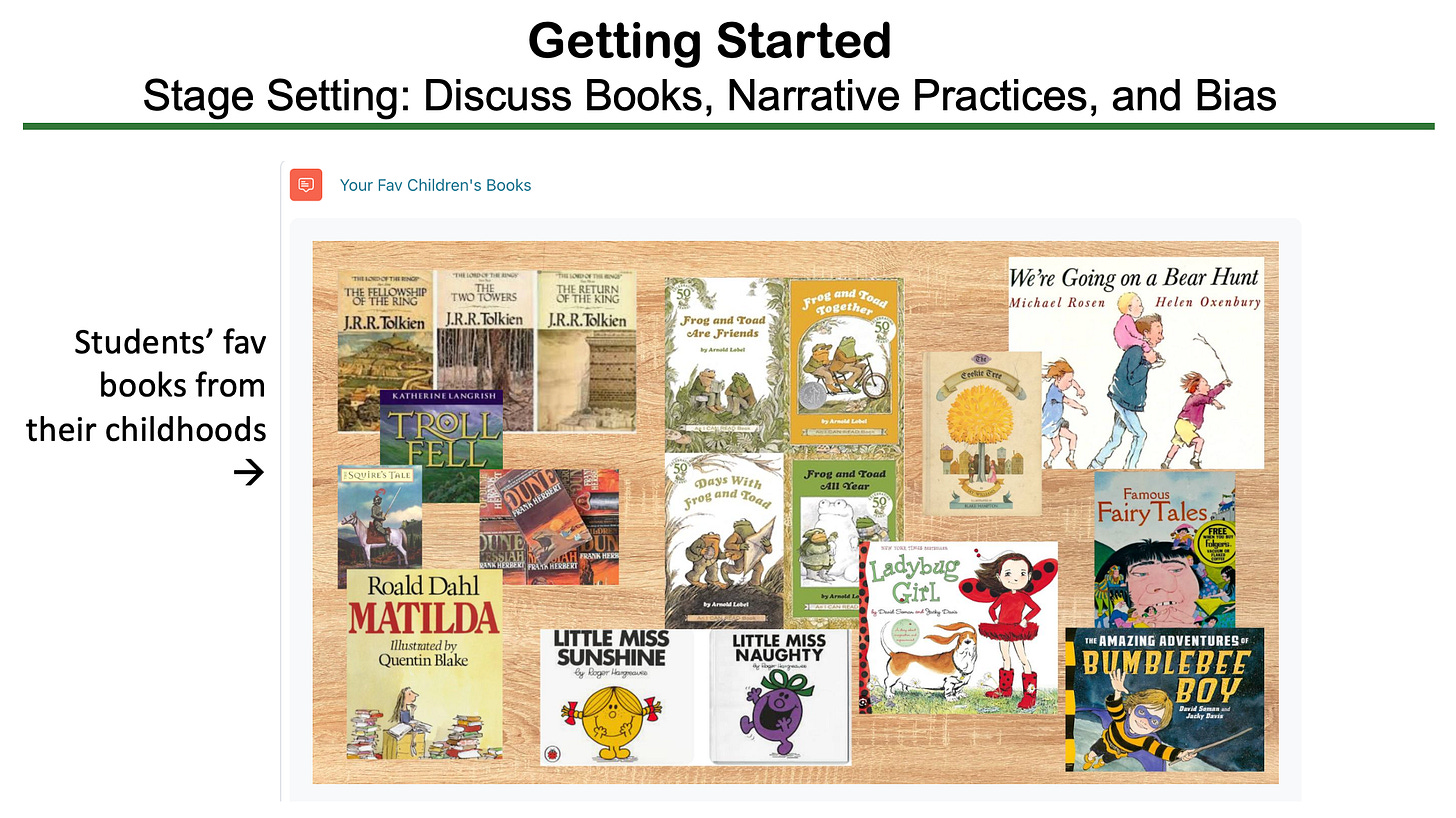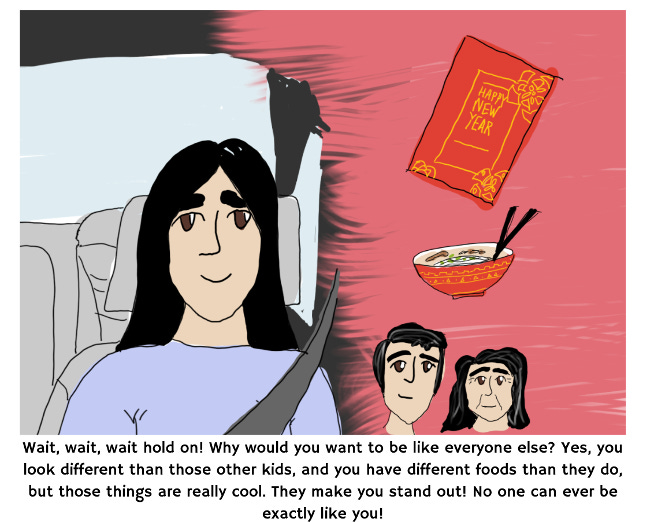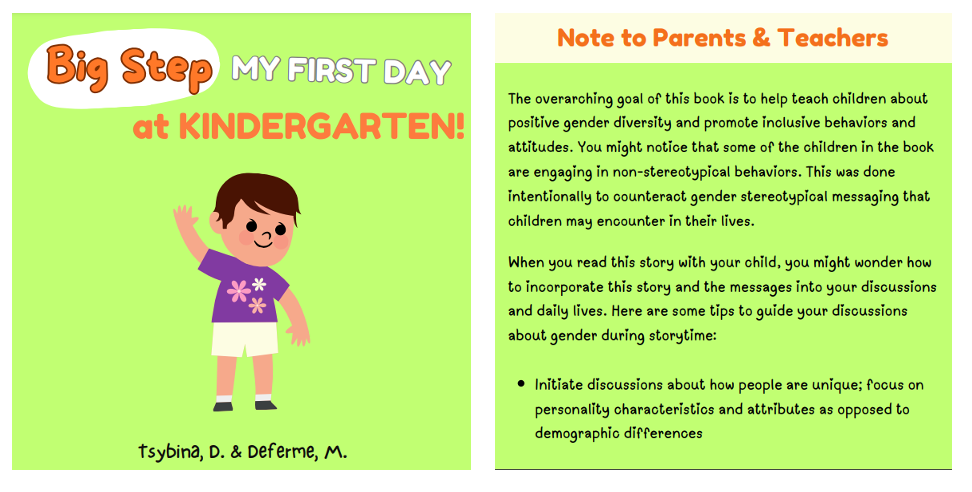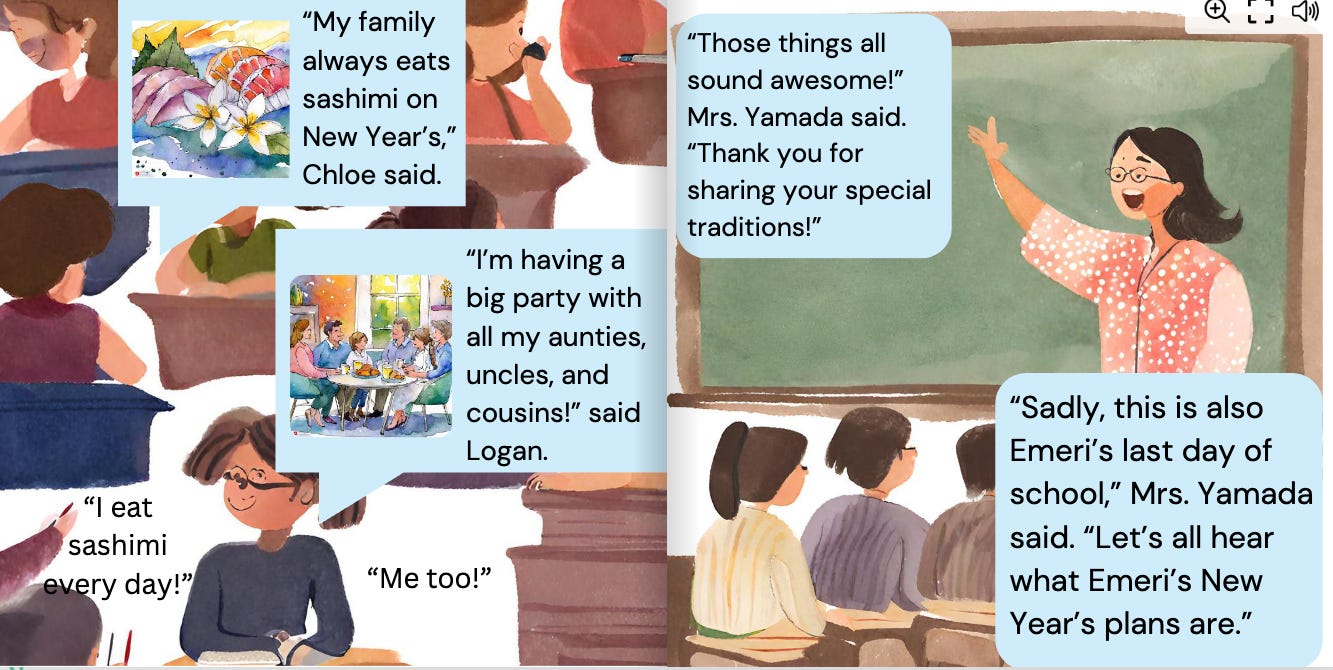Trade Tools: The Butterfly Effect Collective
Authentic project based learning in Cognitive Development classes
Backdrop.
In the Fall of 2020, I made a deliberate change to my teaching wherein I began adding Authentic Teaching and Learning Projects to all of my classes. In my last newsletter (The World has Problems and Psychology has Solutions) I took readers on a bit of a walk discussing my journey of arriving at that point.
That newsletter concludes with a sketch of what Authentic Learning Projects (ALPs) can look like, across the curricula that I teach. Whereas there’s a tendency in the pedagogy literature to center ALP’s on work-related scenarios, they don’t have to. In undergraduate psychology courses, enrolled students are headed for a variety of different jobs. So instead of centering on jobs, the projects I engage my students with center on situations.
In this newsletter, I feature my undergraduate Cognitive Development class, where the situation is “interacting with children.” I design my class to emphasize a key point:
Narrative practices — everyday verbal interactions adults have with children — are powerful forces that shape children’s emerging sense of self and social behavior.
That is, reading books, talking together about shared experiences, and even talking about books and television shows, are socializing experiences. Parents, caregivers, and teachers wield quite a bit of power in shaping children’s development, simply by talking! Understanding how the developmental process works opens the door for naturally shaping the process to encourage positive, prosocial, and inclusive mindsets.
While students learn about cognitive development, they work on a semester long project too, where they author children’s books and create websites to present their book with an accompanying discussion guide for parents, teachers, or caregivers. The books students author, by design, are created to help make “DEI” (diversity, equity, inclusion) waves by addressing a social justice issue like sexism, racism, or ablism. While students may take an explicit approach like Ibram Kendi does with his iconic book Antiracist Baby, or how Chimamanda Ngozi Adichie does with the personal narrative Dear Ijeawele, or A Feminist Manifesto in Fifteen Suggestions, many instead choose to take a more implicit approach where the book is about a typical “day in the life” theme, but where implicit signals for diversity, equity, or inclusion are deliberately woven into the dialogue and imagery.
I call the project “The Butterfly Effect Collective” following the sentiment that ripples made in moments can eventually make waves, and with collective efforts, we can make a difference.
While this is no small ask — to learn about cognitive development AND to create an actual children’s book + users guide — students can do it. As mentioned in my previous newsletter, authentic project based learning sets students up to accomplish far more than they realize that they are capable of. Learning with purpose is remarkably powerful.
So how do I accomplish this?
To make the project work, I am deliberate about what topics I choose to cover in the class. As Cognitive and Developmental Science progresses in the 21st century, more scientific content is generated than can be covered in a single semester class so choices always have to be made about what to cover. I strike a balance between covering traditional theory content like Piaget and Vygotsky, and more modern content like Conceptual Development (with special attention paid to essentialism and social essentialism), Language development (with special attention paid to statistical learning processes), Dynamic Systems Theory, Executive Functions, and the Socio-cultural Theory of Memory Development.
My syllabus is quite detailed and I am happy to share it on request. Here are my course learning outcomes:
Ultimately, this class addresses two deceptively complex questions: What is Cognition? How does Cognition Develop? As you learn about what makes these simple questions complex, you will also learn how to use your knowledge for good. Not only that, but you will learn to share your knowledge in useful ways with the public, too!
All that is to say, I have 4 learning goals for you that are in keeping with Pacific’s overall charge such that as students at Pacific you will be challenged to THINK, CARE, CREATE, and PURSUE JUSTICE in the world.
SLO1. That you can speak with authority as you answer the question “What is cognition?” from the point of view of a Cognitive Scientist. You will be able to summarize and critique theory, explain what is and isn’t yet known about human cognition, how Cognitive Scientists study cognition in infants and children, and relations between cognition and behavior.
SLO2. That you can speak with authority as you answer the question “How does human cognition develop?” from the point of view of a Developmental Scientist, with particular attention paid to pressure points in developmental trajectories and the power of narrative. Developmental Scientists believe that “nurture is our nature” and that without nurture, there is no nature and you will learn to explain this in some detail.
SLO3. What good can come from knowing about cognitive development? What is the applied value of this work? Obvious applications are to create recommendations for how parents, caregivers and teachers can best promote healthy cognitive growth, so that children will thrive in school and in life. In this class, we will use cognitive developmental principles to help caregivers raise socially just children.
SLO4. Following from SLO3, you will put your knowledge into practice by participating in class-wide public-scholarship project. Either independently or in teams, you will choose a social-justice topic and create a children’s book + parent/teacher/caregiver discussion guide that puts what you have learned into practice. Humans come to understand the world and the people in it from the POV of their own cultural and local experiences. When we understand how particular pressure points can nudge infants and children toward or away from “isms” we can make recommendations to help avoid those “isms” from taking root.
In the first two weeks of class the tone is set by deep discussion of children’s books, bias and of the power of narrative. Students usually enter into a cognitive development class expecting to learn about Piaget and Brain Development. They usually are not “primed” to think about socio-cultural perspectives of cognition. As such, this chapter —
Miller, P. J., Fung, H., & Koven, M. (2007). Narrative Reverberations: How participation in narrative practices co-creates persons and cultures. In The Handbook of Cultural Psychology. S. Kitayama and D. Cohen, eds. The Guildford Press, New York & London.
— is an excellent way to begin. In these “stage setting” weeks we also consider Chimamanda Ngozi Adichie’s messages in her incredibly powerful TED talks: The Danger of the Single Story, and We Should All be Feminists.
As well, we do some in-class labs where students learn how to scrutinize children’s books for bias, both implicit and explicit.
From there the stage is set and we dig in, working through the course content and building the class project.
Unit 1: Meta-theories and the Power of Narrative [no knowledge is point-of-viewless]
Unit 2: Theories and Legacies: The Cognitive Developmental Theory Time-line [ongoing meaning making is the crowning achievement of human development]
Unit 3: Cognition & it’s development is situated in physical and social contexts. [Narrative is a key connection between the mind and the world]
In each unit the content is continuously linked to narrative practices. Students read, take notes and tests, and write essays about what they are learning. They reflect, and they create too! It bears repeating that while students work harder than ever, they emerge on the other side of the semester with incredible feelings of accomplishment.
I’d like to show you some of their handiwork here. If you would like to see ALL my class projects, click here and scroll to find all three versions of the class PSY 353: Cognitive Development.
Psychology Student Authored Children’s Books
Book Spotlight, Exhibit A:
The Beauty of Embracing Colors, by Emma Merritt and Megan Huynh, Fall 2021
The website opens with a message from the authors:
Hello! Welcome to our website! We want to share with you a children's book we have collaborated on throughout the last few months. Both of us are Asian American and wanted to share a story in which some of that experience was highlighted. We hope that, through reading our book and thinking through the discussion guide we have shared (see below), that you will come away feeling excited at the beauty of diversity and having a tool that will help children explore the same excitement. For both of us, we have come to love our culture, race, and background and hope that other people will feel empowered to do the same. :)
- Megan and Emma
If you follow the link you can access this beautiful book and review the thoughtful discussion guide. Following are some excerpts from their full book:
Book Spotlight, Exhibit B:
Cora’s Crystal Ball, by Alex Bacon, Fall, 2022
Alex’s site leads with a colorful and informative infographic about how to respectfully normalize difference and disabilities. Alex’s story does just that, in a colorful, engaging, and lively way! You can view the full story on the website, and here are a few excerpts, as well:
Book Spotlight, Exhibit C:
Big Step: My First Day at Kindergarten! by Daria Tsybina & Maya Deferme, Spring 2023
With this book, authors Daria and Maya approached the project with the goal of addressing how constraining stereotypes can be for both boys and for girls. Following, they deliberately flip the script on stereotypes by featuring children’s strengths and interests. They created an inclusive book where the discussion guide is cleverly build right in to the book, as well. Click over to their website for the whole package deal, and scroll here to see a few excerpts.
Book Spotlight, Exhibit D:
Emeri’s Adventures: The Beauty of Cultural Diversity, By Perri Funai, Spring 2024
Like Emma and Megan, Perri’s website also begins with an invitation:
Welcome parents, caregivers, and anyone interested in creating a more inclusive world! The aim of this site is to expand your understanding of the power of narrative and language in shaping children's beliefs. We live in a society where racism and lack of cultural diversity are prevalent. However, the perspectives of our youth and the state of our society can be shifted with the help of narrative and language. This site will guide you in fostering more socially just children.
Perri’s story follows the travels of a young girl from Hawaii to Oregon, and her experiences in a changing diversity landscape. I encourage you to read the whole story, and share a few screenshots here:
In Conclusion: What a difference these projects make!
I hope you are as impressed as I am with my students’ creative and inspired works. Not only do they learn about Cognitive Development, but they learn how they can make a difference with their new-found knowledge!
It bears repeating that students work quite hard in this class, and there are times when they really need some appropriate “care and keeping” to see them through. Some will say, in a variety of ways: “I am not an author!” or “I am not a graphic designer” or “This is too much work compared to my other classes”. And all of these reactionary statements are true, but only just — I mean it is more work than what they do in their other classes. But they can absolutely do the work of authoring and illustrating, once they learn the tools of the trade (we spend class time learning about narrative structure and graphic design tools, too).
At the end of the semester, when students read their stories to each other and we all debrief about the process, 99% of students enthusiastically share that they learned something incredibly valuable. This kind of process makes a difference in students’ own learning self-efficacy, and it inspires them to think different about what’s possible for them, as they continue to think about their professional futures.
Do books like this actually make a difference when it comes to raising socially just children? Here’s the message I included on the home-page of my most recent class’s completed project:
Looking for a way to help young children view the world in an inclusive and "just" way? If so, you are in the right place! This website features unique children's books and thoughtful discussion guides with just this purpose built into their design. The stories here invite readers into worlds where interests and diversity lead, whether the context be playing outside, playing make-believe, going to school, moving to a new state, or getting involved in the world of sport. Each story-site linked below offers you (a) a sweet story children are sure to find intriguing; and (b) a bit of a deep-dive explanation for why the story was written, what social issue the story aims to address, and how to discuss the story and issues it represents with children in naturalistic ways. Words and images hold power and the aim of this site is to help you wield that power well, in the interest of promoting a more socially just society. Ripples made in moments will eventually make waves, and with collective efforts, we can make a difference.
And I believe in this message. The research we cover about the power of narrative, the development of concepts, beliefs, language, and social cognition suggests that they should. I have not done any assessment work to examine whether children’s social cognition or attitudes and beliefs change after having read and discussed these books, but I may do so in the future. Until that time though, I do think it’s safe to say that no harm can come from reading these books, and it is likely that much good can come from it! I honestly encourage you to give them a try, should you have young children in your life to read to.
Please stay in touch.
If you do read and discuss any of these books with children, I would love to know about your experience and the children’s reactions. Please share either in the comments here or in a direct message.
If you would like to know more about my approach to Authentic Project Based Learning, stay tuned. In future newsletters I will feature the projects I do for my classes in Intro to Cognition, Memory and Mind, and Senior Seminars. I’ve got plenty to share!
Authentic learning has many “pros”:
It’s a creative means of:
Making the class relatable to a diverse student body
Updating students’ initial misconceptions about psych-sci content
It offers students an opportunity to:
Learn something about themselves
Level-up their 21st-century digital skill sets
Feel like they can address some of the world’s problems
It provides students with an answer to the question: “Why am I learning this?”
By creating meaningful & connected media content, the scientific content of the course is more deeply internalized























